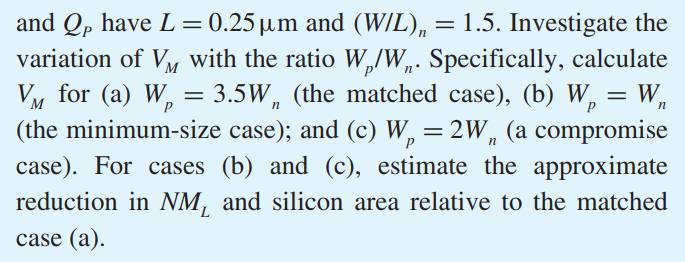Consider a CMOS inverter fabricated in a 0.25-um CMOS process for which VDD = 2.5 V, Vtn = -Vtp = 0.5 V, and unCox = 3.5 upCox = 115 uA/V2 . In addition, QN and QP have L = 0.25 um and (W/L)n = 1.5. Investigate the variation of VM with the ratio Wp/Wn. Specifically, calculate VM for (a) Wp = 3.5Wn (the matched case), (b) Wp = Wn (the minimum-size case); and (c) Wp = 2Wn (a compromise case). For cases (b) and (c), estimate the approximate reduction in NML and silicon area relative to the matched case (a).




You'll get a detailed, step-by-step and expert verified solution.
 Work With Experts to Reach at Correct Answers
Work With Experts to Reach at Correct Answers